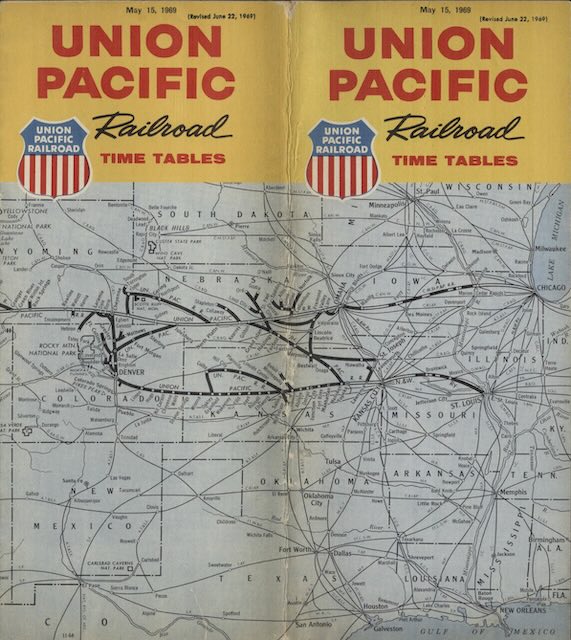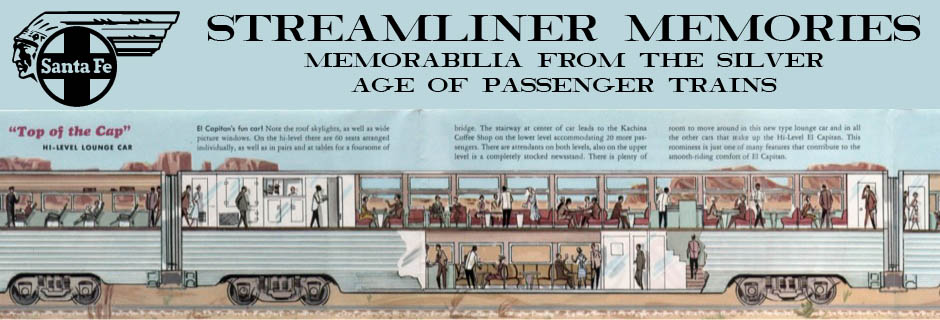Despite the loss of so many trains, Union Pacific still managed to fill a 36-page timetable. This meant there were a lot of blank columns in schedules that once showed several trains and now showed only one.
 Click image to download a 22.9-MB PDF of this 36-page timetable.
Click image to download a 22.9-MB PDF of this 36-page timetable.
This timetable still has separate pages of condensed schedules for Chicago-Los Angeles, Chicago-San Francisco, and Chicago-Portland even though there was only one (in the case of San Francisco) or two trains each way each day. Starting in 1960 or 1961, UP had saved a page by putting the City of Denver on the same page as the City of San Francisco, but it would have been better to combine the City of San Francisco and City of Los Angeles (which were one train east of Ogden) on one page and the City of Portland and City of Denver (which were one train east of Julesburg, Colorado) on another page.
Several more pages are devoted to Kansas City-Portland, Kansas City-San Francisco, Kansas City-Denver, Denver-Salt Lake City, and similar routes when in fact these schedules merely repeated the same trains over and over in different combinations. Only a careful reading reveals that many of these routes had no through cars. The City of Kansas City had one coach and one sleeping car that went through to Los Angeles, but any other destination from KC to west of Cheyenne required a change of trains.

Good ol’ UP. As late as 1969 the City of Portland/Denver and the COLA/COSF/COKC were still run as separate trains, and still had dome dining cars. By the following year everything out of Chicago ran as one train, and the dome dining cars were withdrawn from service because they were so expensive to maintain.
Ever a class act, even trains 17 & 18, the accommodation train between Denver and Portland still had a sleeping car and meal service, along with keeping its name. Interestingly, Santa Fe, certainly as pro passenger as the UP if not more so, decided that trains 23 & 24 would not keep the Grand Canyon name.